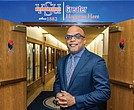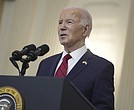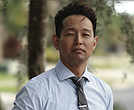Walking trail sidetracks GRTC’s speed
11/30/2023, 6 p.m.
GRTC is creating a 10-year strategic plan for improved service across the Richmond region.
A draft of that plan is in place, and the bus company asks you to visit https://grtctsp-fitp.hub.arcgis.com, check out the proposals for each route and provide some feedback.
We did. And we can tell you the plan includes good ideas for upgrading service, proposals for extended bus operating hours, and the creation of an express run between Richmond’s Downtown and the airport.
But the bottom line is that the plan is limited on resolving a key problem: speed.
Based on our review, the plan leaves GRTC as a slow means of travel on most of its regular bus routes, despite a significant fraction of the population that relies on it for travel—primarily to get to work—but also for shopping and visits to the doctor.
The plan indicates that most routes will offer service every 30 to 60 minutes. Depending on where you are going, it can be faster to walk or ride a bike than wait for a bus.
People who ride buses must plan. If you have your own vehicle, 30 minutes is about the max you have to ride to a destination.
But it can take an hour to two hours to reach a destination using a bus, particularly if you have to transfer, and just as much time to get back.
As is the case today, the strategic plan calls for the fastest service to be provided through Pulse, the bus rapid-transit line that currently runs between Rocketts Landing and Willow Lawn Shopping Center. The plan calls for improving service so that Pulse buses would arrive at any given station every 10 to 15 minutes, day and night.
If the plan pans out, Pulse also would be improved. The current east-west line on Broad Street would be extended west to Parham Road and a new north-south Pulse line would be added to run from North Side on Azalea Avenue to a location to be determined on Midlothian Turnpike.
But the rest of the lines would have more limited service.
GRTC is aware of the speed problem. On its RideGRTC.com website, you can now track buses in real time so that your wait at a bus stop isn’t too long. Another tool helps you determine which buses to take to get to your destination.
GRTC also allows impatient riders to call two times a day to get a free Uber ride from one bus stop to another.
In addition, GRTC has just launched a pilot micro-transit program in the Washington Park-Azalea area that allows riders to call and get a free ride to a bus stop or other destination within the program’s service area.
The program soon will expand to Ashland, North Chesterfield and other suburbs where a regular bus route is not feasible and the draft plan spotlights several areas of the city such as Fulton that are proposed for micro-transit districts.
But if transit is really to be useful, every line needs to have the same service as Pulse, with buses arriving every 10 minutes at peak periods and every 15 minutes at non-peak times.
Of course, that means more resources. One key reason that will not happen is that a major portion of a stream of revenue aimed at improving transportation in this area is being diverted.
You may not know this, but in the Richmond area, you pay a higher sales tax and gas tax to fund transit improvements. The Central Virginia Transit Authority was a created to divvy up the money the extra tax generates in this region.
GRTC is projected to receive $30 million a year, with $20 million going to support current operations and $10 million earmarked for transit improvements. But it could be so much more.
Elected officials in Richmond and other local governments who sit on the board of the CVTA, including those from Henrico, Hanover and Chesterfield counties, have decided the highest priority is not transit, but the creation of a 43-mile walking trail between Ashland and Petersburg.
That trail is projected to cost $266 million, but with inflation it could top $300 million when it is complete in 10 years. Some of that money will come from the state, but a major share will come from the CVTA, which already has earmarked more than $100 million for trail development and could see its share rise to more than $150 million.
What if, instead of spending millions of dollars on a trail, elected leaders invested in a first-class transit system that is fast and reliable? Why not put that money toward seriously improving service?
An excellent transit system is a necessity, not just for those who have to ride, but for all of us. Speedier service could induce many of us to park our cars and ride an energy-efficient bus to work or other places.
GRTC has a need for speed, but those in power apparently have no interest in making that happen.







